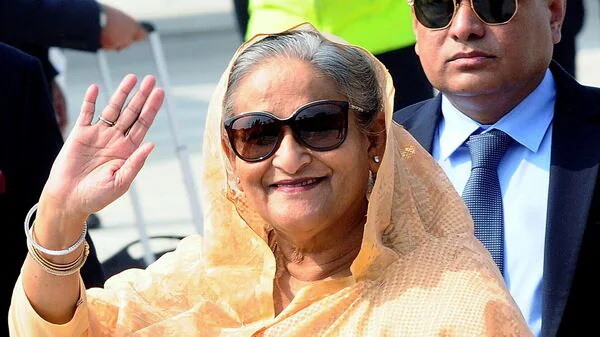Sheikh Hasina fled the capital Dhaka in a military helicopter after weeks of protests. The army announced that a temporary government would be formed.
Bangladesh Prime Minister Sheikh Hasina resigned Monday and left the country, Channel 24 television reported, after weeks of widespread street violence over student protests that have left nearly 300 people dead.
Hasina left the country in a military helicopter at 2:30 pm local time (4:30 am in Washington, DC, USA), accompanied by her younger sister Sheikh Rehana, local newspaper Prothom Alo reported. Sources cited by the media said they left for West Bengal, India.
Moments after this information was released by local media, a source close to the leader, quoted by the French agency AFP, confirmed that Sheikh Hasina had left the country’s capital, Dhaka, by helicopter, before thousands of protesters invaded the government palace.
“The security team asked her to leave, she didn’t have time to prepare,” said the same source, adding that the politician left the location in a convoy of vehicles and later “was taken away (from the capital) by helicopter.”
Speaking to the BBC’s international service, Hasina’s son clarified that she had to leave the country for her own safety and said he was “disappointed that after all her work, a minority had risen up against her” and that Hasina would not return to try to seize power.
Earlier, armed forces chief Waker-Uz-Zaman announced Hasina’s escape in a televised statement and said a caretaker government would be formed . The army is said to have held talks with political parties — excluding the ruling party — and the president to chart a path for the country’s future.
“The country is going through a revolutionary period. I promise you that we will bring justice for all the murders and injustices. Please do not return to the path of violence,” Zaman said, as quoted by Reuters .
After this meeting with the army, President Mohammed Shahabuddin ordered the release of former Prime Minister and opposition leader Khaleda Zia , as well as those detained during the protests.
Shahabuddin “unanimously decided to immediately release Bangladesh Nationalist Party (BNP) chairwoman Begum Khaleda Zia” and “all those detained during the student protests,” according to a statement from the presidency. Zia, 78, has been in poor health and hospitalized since being sentenced to 17 years in prison for corruption in 2018.
On Sunday, the military had already met to take stock of the protests in the country, but it is not clear whether the military will take over the government. Leaving the meeting , Zaman said only that “the Bangladesh army will always stand by the people, the public interest and any need of the state”.
The protests before the escape and the looting afterwards
Thousands of people gathered outside the prime minister’s official residence in Dhaka on Monday . After news of her departure became public, many of them stormed and looted the building , according to images broadcast on television channels.
Bangladesh’s Channel 24 showed footage of dozens of citizens at the official Ganabhaban residence carrying furniture, refrigerators and crockery in a victory mood. Many of them stopped to wave to the television cameras, arms raised, after months of protests.
The protesters had taken to the streets despite the curfew decreed by the Government last night, in response to yet another day of violence in the context of student protests that began five weeks ago.
At the President’s meeting with the army and opposition parties, the lifting of the mandatory curfew and the reopening of “offices, factories, schools, universities” and companies was decreed from 6:00 am (1:00 am in Lisbon) on Tuesday.
Broadband and mobile internet services were also disrupted for about two hours on Monday, according to independent cybersecurity watchdog Net Blocks.
Hasina’s resignation follows five weeks of student protests that began peacefully but turned violent amid allegations of a harsh police crackdown on demonstrators.
Around 300 people, mostly students and civilians, were killed during the violent clashes that plunged Bangladesh into chaos.
The student protests began by demanding an end to quotas in public employment , which they consider discriminatory in one of the world’s poorest countries, but ended by demanding the resignation of Hasina and her government after the protesters were killed.
Hasina took power in January for a fourth consecutive term after winning elections that were boycotted by the opposition.
New episodes of violence caused at least 56 deaths this Monday, according to the France-Presse (AFP) agency, which cited sources from the Dhaka University Hospital, which reported 44 deaths, and the police, which registered another 11 deaths in the capital and another in the port city of Chittagong.

Faleminderit shume për këtë ndihmë dhe kete shtytje për të arritur synimet e mia ju jam mirënjohës për terë jetën time Allahu ju shpërbleftë